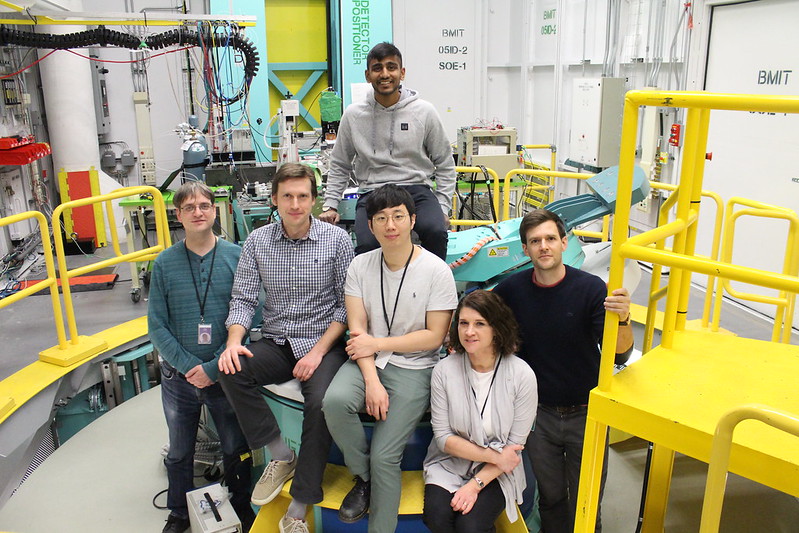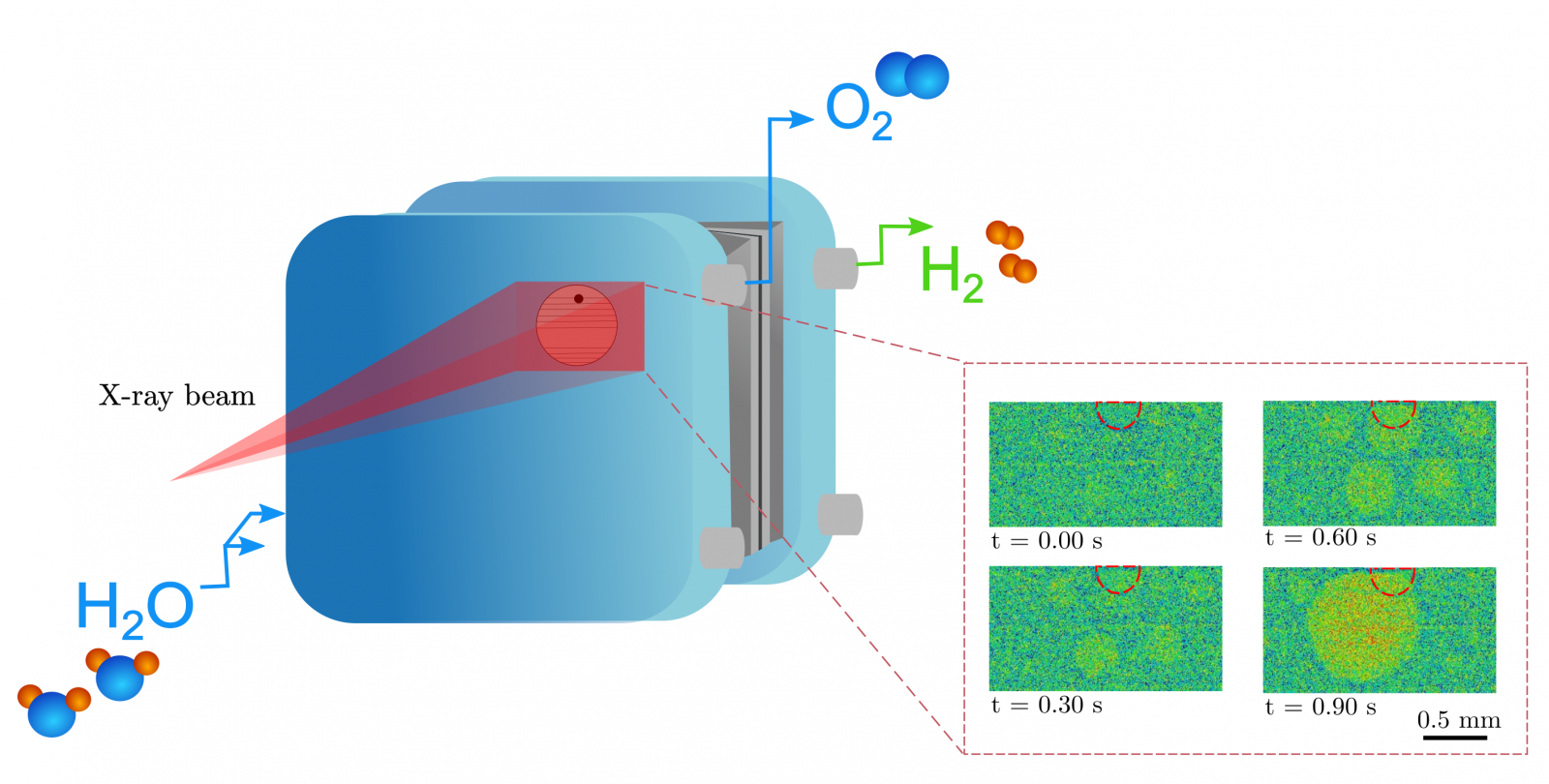Powering the future of clean energy
Canadian researchers work towards harnessing the potential of hydrogen as an energy source for everyday use.
By Erin Matthews(Left to right) Adam Webb (CLS), Sergey Gasilov (CLS), Manojkumar Balakrishnan (U of T), Jason Keonhag Lee (U of T), Denise Miller (CLS), Kieran Fahy (U of T) on the BMIT beamline at the CLS.
Hydrogen gas can be used to power vehicles and has the potential to provide electricity to homes
The global quest for clean energy is championed by researchers in Canada who are focused on harnessing the potential of hydrogen.
The idea of the hydrogen economy was first proposed 50 years ago as a way to combat the negative effects of fossil fuels. Its future is the focus of new research from the University of Toronto’s Thermofluids for Energy and Advanced Materials (TEAM) lab, whose work relied on the Canadian Light Source (CLS) at the University of Saskatchewan to visualize performance.
"So, ideally, electrolyser refueling stations would replace current gas stations" - Jason Keonhag Lee
“I wanted to participate in mitigating climate change, and I saw potential in the hydrogen economy,” TEAM Lab’s Jason Keonhag Lee said, “If we move towards this energy we need to find a way to get clean hydrogen.”
The TEAM lab was able to improve the efficiency of hydrogen production through a promising technology called Polymer electrolyte membrane (PEM) water electrolysers, with results they published recently in ACS Applied Energy Materials.
PEM electrolysers can store energy generated from renewable resources like the sun and wind as renewable hydrogen, which can be used to provide on-demand power with fuel cells. Lee worked on improving the design of PEM electrolysers for his PhD and continues his research in hydrogen energy, now as a post-doctoral fellow in the TEAM lab.

Lee’s research focuses on improving the delivery of liquid water in the electrolyzer, in order to enhance its performance, which he was able to visualize in action at the CLS.
On the BMIT beamline, Lee and his fellow team members were able to see the growth and detachment of a bubble from the features he designed to improve the transport layer. This study was only possible because of the high spatial and time resolution provided by BMIT.
“I was able to capture key transport mechanisms taking place in the electrolyser, which occur in less than a second,” Lee said, “When I actually saw the real time behaviour in the beamline, I was very excited!”
PEM electrolysers take liquid water and electrical energy––preferably from renewable resources––to generate hydrogen and oxygen gas. Water is broken down to hydrogen protons and oxygen gas, and hydrogen protons move through the membrane into the opposite compartment to produce hydrogen gas.
This gas can be used to power vehicles and has the potential to provide electricity to homes.
“I believe that this research will, in fact, benefit everyone,” Lee said. “Once the hydrogen economy really kicks in, hydrogen gas stations would be available. We would need these refueling stations for hydrogen to power fuel cell vehicles. So, ideally, electrolyser refueling stations would replace current gas stations.”
Aimy Bazylak, Professor of Mechanical Engineering at U of T and Canada Research Chair in Thermofluidics for Clean Energy, stressed the importance of Lee’s research.
“We need to move away from power generation technologies that are producing greenhouse gas emissions and contributing to global warming––so Jason’s work and leadership in this research area is just so important in that regard,” Bazylak said.

Bazylak stressed the importance of the synchrotron to her research group.
“These experiments run multiple days, 24 hours a day, and we get such tremendous support from Sergei, Ning, Adam and the whole BMIT crew. It is an internationally unique opportunity to work with the BMIT team,” Bazylak said.
While busy analyzing data generated over the past year, the TEAM lab is hopeful they can return to the CLS in the near future. Bazylak believes that the synchrotron is core to the lab’s research program.
This research was made possible by NSERC, including the CGS scholarship, Discovery Grant, and Canada Research Chair funding. Lee stressed the importance of the CLS travel support, which helped support his research.
Lee, Jason Keonhag, ChungHyuk Lee, Kieran F. Fahy, Pascal J. Kim, Kevin Krause, Jacob M. LaManna, Elias Baltic, David L. Jacobson, Daniel Seth Hussey, and Aimy Bazylak. "Accelerating bubble detachment in porous transport layers with patterned through pores." ACS Applied Energy Materials (2020). DOI: 10.1021/acsaem.0c01239
For more information, contact:
Victoria Schramm
Communications Coordinator
Canadian Light Source
306-657-3516
victoria.schramm@lightsource.ca
